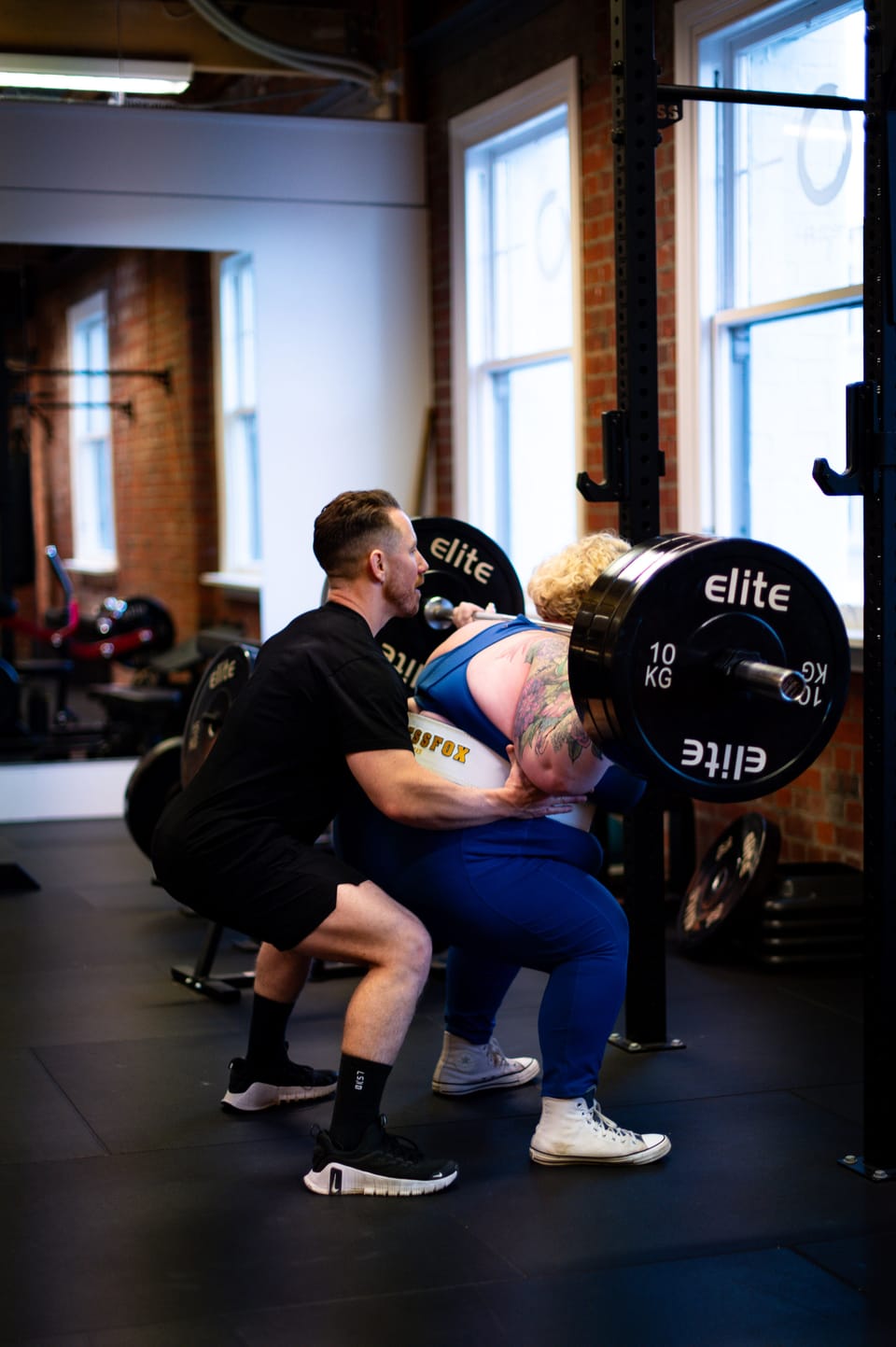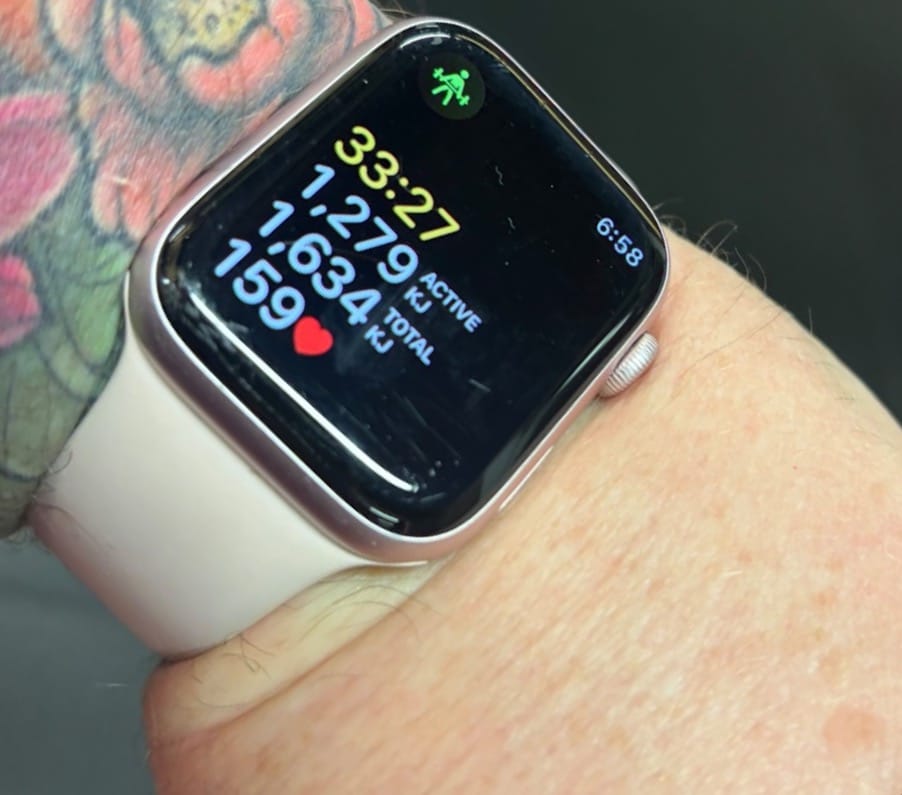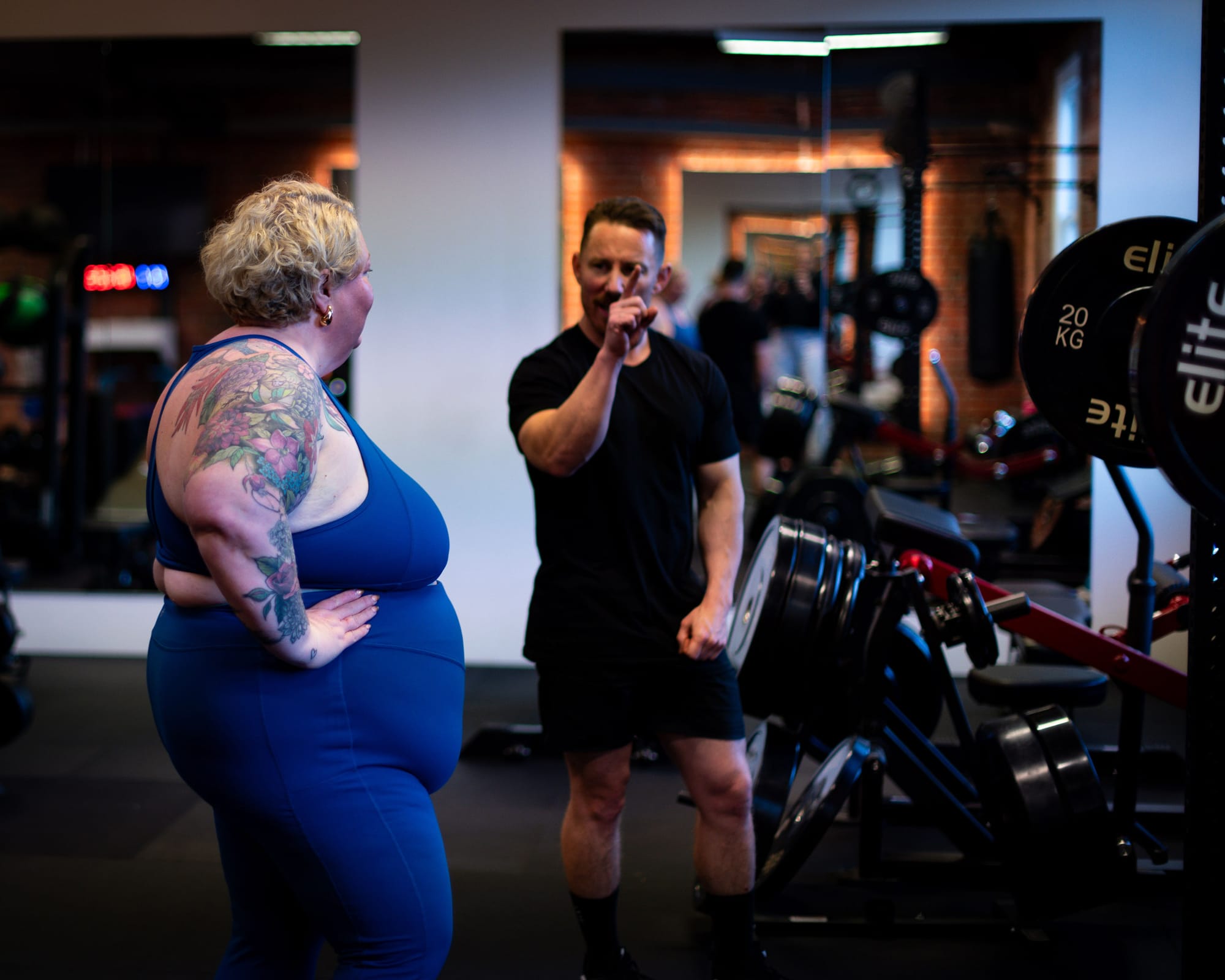To depth

Every time I do a back squat, it goes like this.
Deep breath.
Duck under the bar and curl my hands back behind me.
Find the knurling with my index finger, and grip the bar.
Deep breath.
Settle the bar on my shoulders.
One foot in front of the other.
Deep breath.
Small brace (depending how heavy it is, maybe a big brace).
Push the bar off the rack.
One step back.
One step back.
Half a step sideways.
Foot wiggle.
Deep breath.
Another deep breath.
Brace.
Hinge.
Squat.
Once I get to the bottom of the squat, that’s when the real work begins.
My feet push the ground away, toes spread.
My glutes and hamstrings engage, driving up. I’m thinking about my knees staying pushed out, my elbows forward, my shoulders pulled back, my head up.
I’m thinking about not getting crushed.
I’m thinking about five years ago, when I couldn’t bend over to put on pants
Now I can hold 120kg on my back and lift it up. I’m not thinking I'm just moving.
When I get back to the top, I shuffle forward, finding the rack, placing the bar in the hooks and duck back under it.
Deep breath
Look back at the weight.
You lifted that.
It didn’t crush you.
All of it—the bracing, the steps, the breath—it’s my ritual. My moving meditation. My way of switching off. (Something, as a chronic over thinker, I really need help with.)
Under that bar, conscious thought goes out the window. At lower weights, I can yap to Carl, 80kgs on my back, setting the world to rights through 6 reps, until my cardiovascular endurance gives out and I can’t breathe and squat and talk at the same time.

But when I am alone at the gym, heavy metal blaring in my headphones, prepping to lift my bodyweight, all I have is the routine I’ve practiced for five years. It’s hard to be anxious when you’re putting your body under so much stress.
Carl and I wanted to write about that routine—and everything that surrounds it.
I’ll talk about what I’ve learned: what’s changed, what habits I’ve built, what I’ve messed up, and what I still struggle with. He’ll bring the science—twenty-plus years of fitness industry knowledge.
Like: Why is it so hard to stick with the basics, even when I know what’s good for me? Sleep, water, vegetables, protein, movement, people I love. Why is getting the right combo of those things so hard?
How much protein do I actually need—and should I just give in and invest in Big Greek Yoghurt already?
How do I navigate #gymtok when everyone’s trying to sell me something?
And seriously—why do I get so puffed doing squats?
I mean, I’m not running. I’m not jumping. I’m just… standing up and sitting down with a barbell.
So I asked Carl.

Carl here. Thanks Megan, great question and one I hear a lot! A lot of people think of cardio and lifting as totally separate worlds. Like, running gets you sweaty and out of breath, lifting just makes your muscles sore. But it’s not that simple.
I think people often separate cardio and resistance training in their minds, probably because its easier to study, program, or visualise that way.
Put simply, your heart rate increases during exercise because your muscles need more energy. One way to produce this energy, your body uses oxygen through a process called cellular respiration. Since oxygen is delivered via the blood, your heart pumps faster to meet the demand.
Take squats, for example. They engage large muscle groups like the glutes, quads, and hamstrings, along with several supporting muscles. This needs heaps of energy, and that demand elevates your heart rate, just like cardio.
There is a little more to this, however. There are a few energy systems at play during exercise and it completely depends on intensity and duration. The aerobic system, which requires oxygen only becomes the primary source of energy after the first 10 (ish) seconds of activity.
Before that, your body relies on anaerobic energy systems, meaning they operate without oxygen. What this means is that during the early reps of a squat set, especially heavy or fast ones, your body taps into these anaerobic systems first.
As the set continues and the demand increases, the aerobic system gradually takes over to support ongoing effort. So if you are getting beyond around 10 seconds of squats (and assuming you are lifting enough to work hard), you will notice your heart rate will increase and you'll get gassed.
So let’s say you're in that classic muscle-building zone—working hard for 30 to 60 seconds per set. Or maybe you're using drop sets or cluster sets to push even further. Either way, your heart is working overtime to keep up. That’s why resistance training can feel like cardio, and why you might get breathless even though you’re not “running.”
Basically, your programming should reflect your priorities. If you want to have some cardio you can increase reps, do circuit training or shorten your rest intervals.
If you want to prioritise strength and power then I would keep your reps low and have longer rest intervals. If your goal is general health and wellbeing, I think it's quite nice to have a combination of both - I'd programme some moderate load in a circuit format and minimise rest.
Playing around with all these variables represents the beautiful mix of science and creativity that keeps me - as a trainer - engaged, especially when you consider matching patterns to the person's wants and needs (perhaps a future post!).
So tl;dr, during the early part of a squat set, your body doesn’t need oxygen yet, it’s using anaerobic systems to get the job done. But as you push on, the oxygen demand rises, and your heart kicks into gear. So the longer (and tougher) the set, the more it feels like cardio. Whether that's good depends on the right routine for you.
So yeah. Your legs are asking for fuel, your heart’s delivering it, and that’s why you’re gasping at the top of your set—even though you're just standing up and sitting down.
Follow up questions Megan has that will totally be future newsletters
- So, does that mean I don't ever have to do cardio if I am lifting?
- If I am getting cardio, is that impacting my gains?
- How come some days I get more puffed than others?
- So...puffing doesn't mean I am unfit?
Cool stuff we saw this week
- (Megan) She's A Beast is my favourite strength newsletter. I've already devoured her memoir: "As a woman, I felt that people judged my appearance before anything else, and I didn’t want that to be the main, valuable thing about myself. To get credit for anything else, I had to manage that first. So I completely understand this mentality of not feeling like you can trust anyone to appreciate you if you don’t manage your appearance." (The Guardian)
- “If the watermelon is not heavy, the dog food bag is not heavy and your grocery bags aren’t heavy,” she said, “you begin to realize that so many things in your life are easier.” We love badass old ladies around here. (And we intend to become them!) (NYT gift link)
- (Megan again) My wonderful colleagues investigating that viral "women should be able to do 11 push ups" thing. I...have thoughts. RNZ
- “Obviously the sense of progression and hitting or chasing personal bests is intoxicating, but it’s also the fact that you have to clear your mind completely when you’re lifting a heavy barbell. That’s very therapeutic.” (Guardian)
- (Carl) In researching powerlifting, it turns out that male and female powerlifters gain strength at the same rate. Journal of Strength and Conditioning.
- (Carl again) "Suffer through the structure to conquer the chaos" - Unknown. Do the hard stuff up front, to make future chaos so much more comfortable! This includes exercise, it really can make life a lot more enjoyable and less limiting.
- (Carl again...) “We could face each other over coffee cups in total silence.” A book I've read recently called Norweigan Woods by Murakami - We all need friends like this.
If you liked this, please send us feedback! And if you really liked it, please get other people to subscribe.
